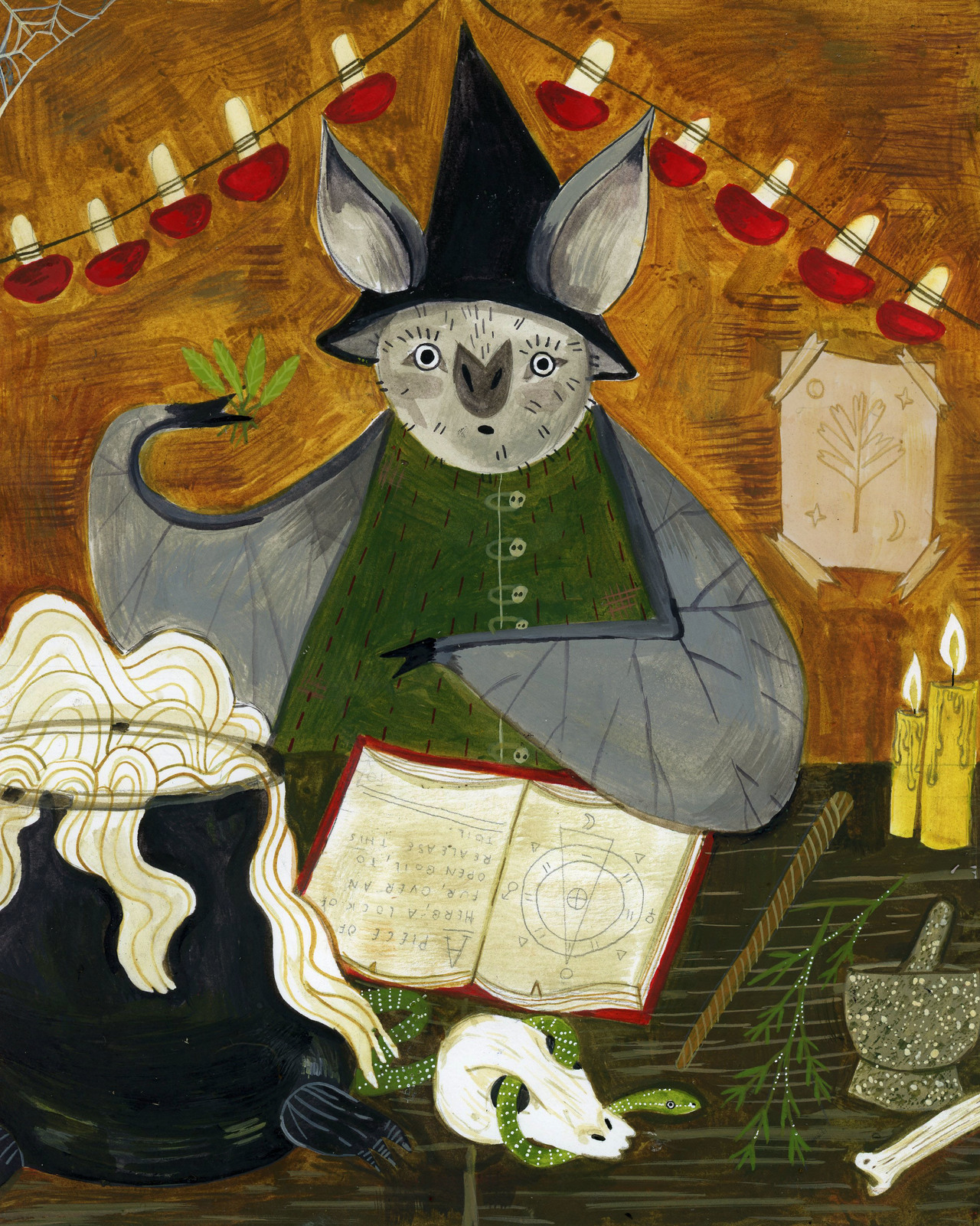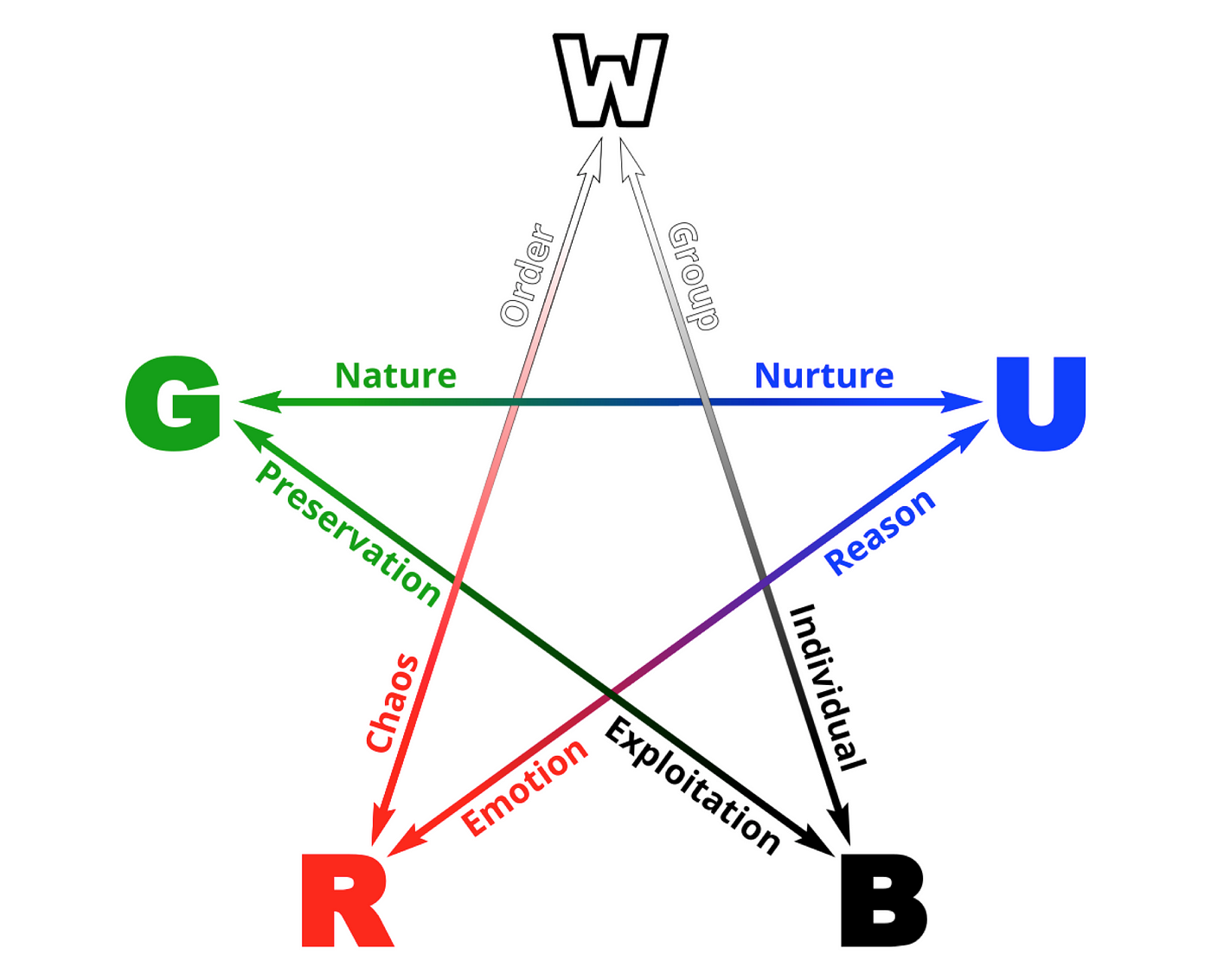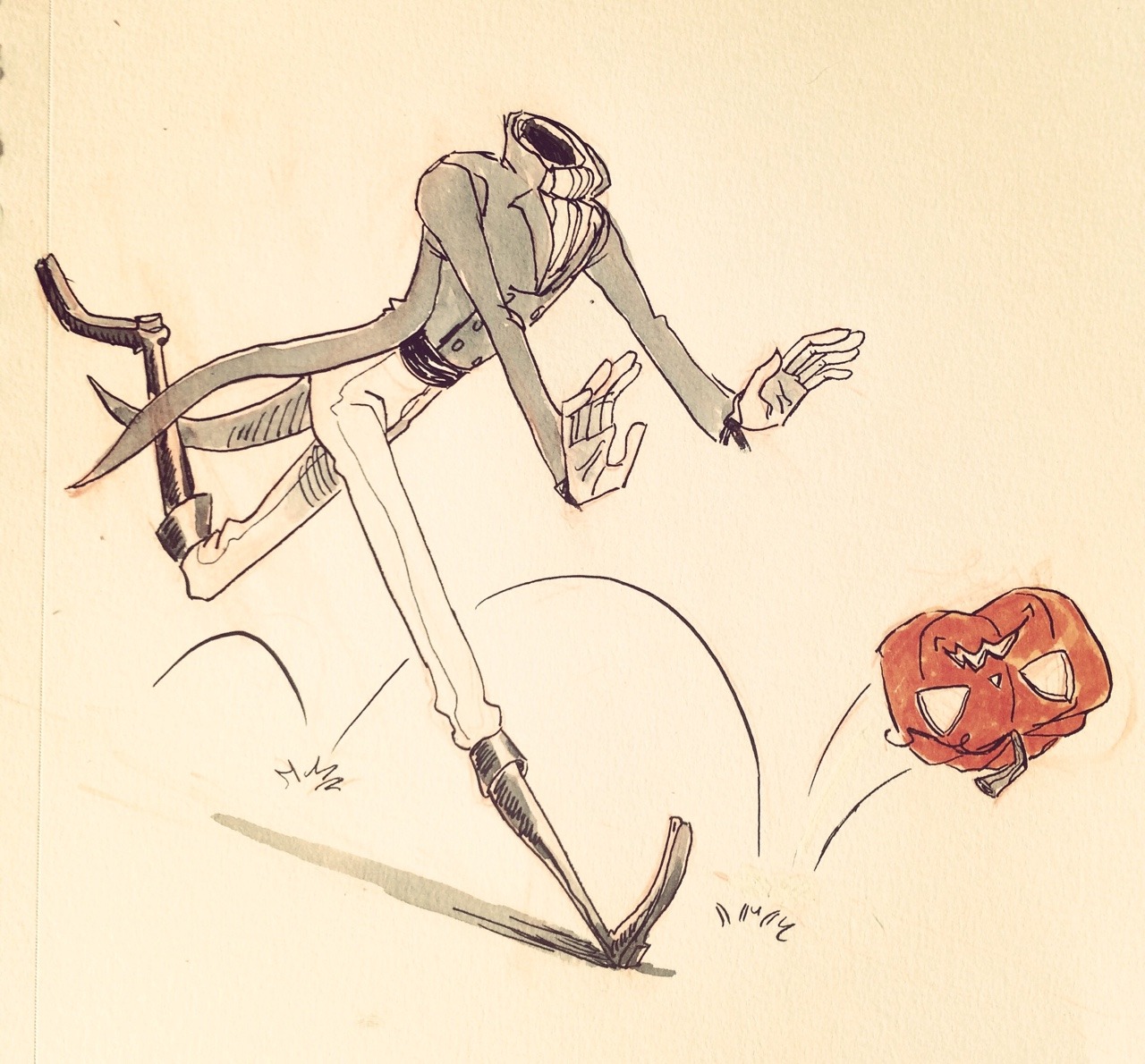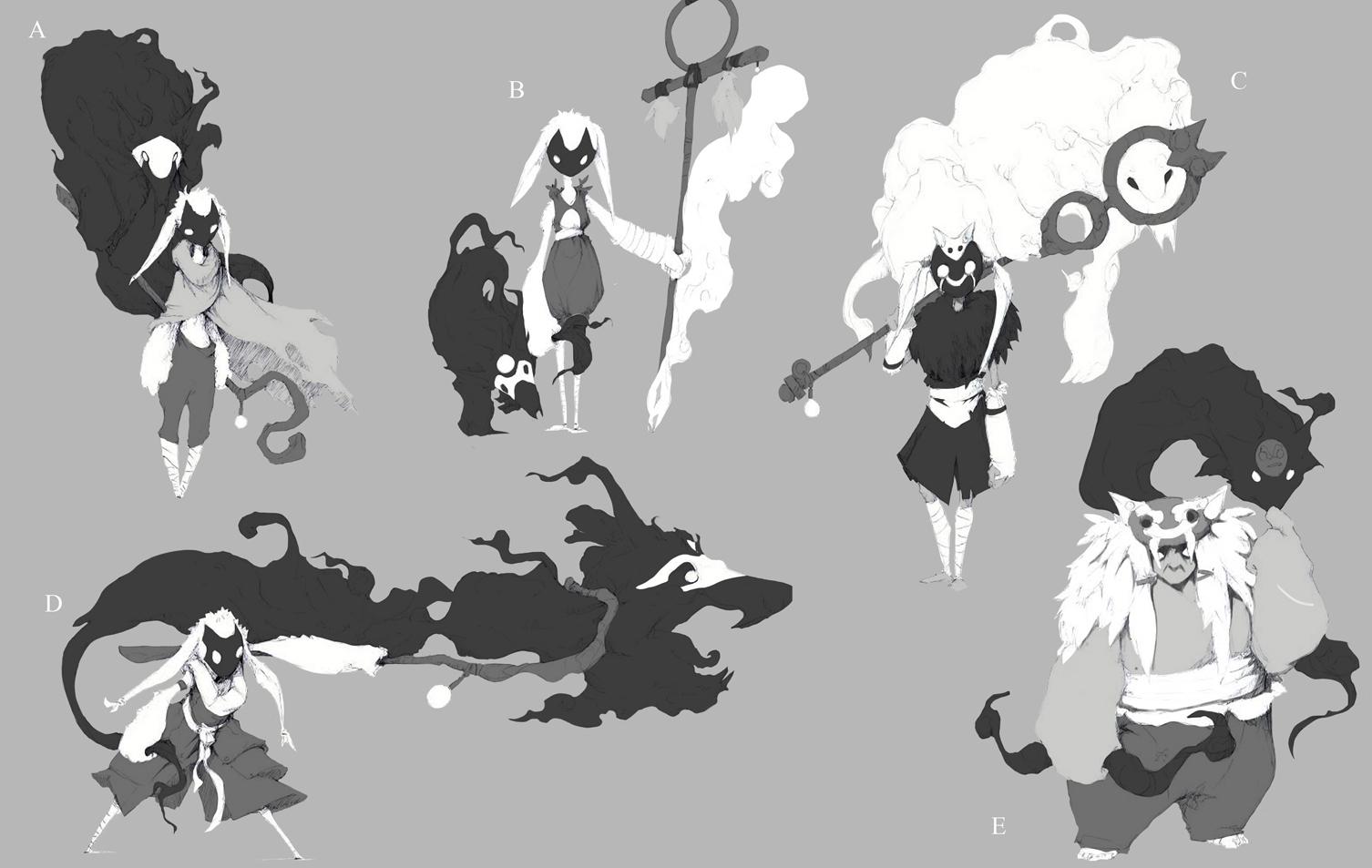This is a post about Hazzem, the first continent I ever created for Loom and the main setting for my first longform campaign (Overlight, played from like the last day of 2016 'til mid 2018).
Overlight was a post-apocalyptic campaign, though that's somewhat of a misnomer. It wasn't a total apocalypse - there were survivors, and the "Shattering" (the apocalypse-scale event) only affected Hazzem. However, one unique thing about the continent is that (due to an ancient game being played by the fey) it's impossible to leave. Sail off from the west coast, and a mere 60 miles later you'll wash up on the eastern shore. For this reason, much of Hazzem's population believed that Hazzem was the
only continent on Loom until after the Shattering.
Anyways, this is a map of Hazzem from before the events of Overlight. Specifically, it would be circa 1330 AEM. Whenever I have time for it, I'll release a map of Hazzem from after Overlight.
Here's a full-size version of this image.
A. The Yetkoli Empire is the mightiest of the human nations that remain on Hazzem after the Quartering, having forced themselves into many formerly-sovereign territories and made them either vassal nations or added them to the Empire as colonies (A2). Their culture prioritizes unification above all else, encouraging its annexed territories to embrace the teachings of Maglubiyet, their namesake and inspiration for their tyranny.
B. Only barely the third-largest of the human Empires, the Linkoli formed post-Quartering from humans who had goblin blood within them. They revere goblinoids as lucky spirits, and nobility within their aristocratic circles is based around who has the highest percentage of "pure" goblinoid blood in their family - often measured through parties designed to test the acuity of one's sense of smell. They're like wine tastings, but revolving around terrible smells (which "true" nobles are supposed to find exquisite).
C. The smallest human nation, and not truly an "empire," the Dobarkoli were refugees from the rampant slaughter of the Quartering. They are not truly expansionist, and have acquired their additional land through negotiation almost entirely. Cartography is seen as the most noble pursuit by the Dobarkoli, and they have a reputation as either the "softy" humans or the "non-imperialist" humans, depending on who you ask. Still, though, they frequent other nations for their map-making and anthropological exploits.
D. The last and second-largest human nation, the Rikolese Empire has a culture of body modification and transmutation magic. Mutations are only as taboo among them as tattoos are in our modern society - still shunned by some circles, but those who do would be considered conservative. They have a colony (D2) in the northeast where they procure cadavers from undead and seafaring races to experiment with new body modifications. Aside from this, they are known for their gothic architecture, rampant
vampirism (the cause of much stigma), and spicy food.
E. Dhelkost is a vassal nation of the Yetkoli Empire, a blend of traditional orcish culture modified by human colonialism. It is kept as separate from the Empire so that it can be used as a buffer nation (mainly against Sharsvud), and because many human cities have a stigma against orcs, and would give the federal government hell for allowing them within their borders. Dhelkost has only a few cities and is largely rural. It is also in constant financial crisis - orcs don't understand the concept of a "positive" currency, having used a debt-based economy for thousands of years. Thus, they never spend their money, devaluing Dhelkost's currency into oblivion.
F. Bahkost is a largely agrarian society of orcs, with a society structured around the mastery of disciplines. After maturing to adulthood, an orc will be escorted from their communal raising home and travel to a guild to attempt to become a great artisan. Other races will sometimes, and usually begrudgingly, travel to Bahkost to study. It's also where rich people go to get fancy prosthetics, as orcs are known for being fantastic at creating them. They're known for their springtime theatrical rituals, which are essentially ancient greek Dionysian festivals.
G. Etail Noum, a society of stargazers and astronomers, is an offshoot of Bahkost. They've scavenged much from an ancient
Sylvaa society that used to exist in this part of Hazzem. Though they were largely orcish at one point, they have attracted a large immigrant population - particularly halfling followers of Sotiro, the god of stars and travel. Their government is based on astrological signs, electing a leader born under the proper sign for each constellation's season.
H. Sharsvud is the name of a de-facto nation and the forest within which it is located. Another largely orcish nation, it is effectively an anarchy - the closest thing to a government is the council of High Druids, who would snort and spit black phlegm at you for calling them a government. They collectively worship a divine boar called Thousand-Pierced Yev'rott, who they believe will trample human society underfoot. There is internal squabbling about whether or not to allow worshippers of Yev'rott from other nations to live among them. Despite all this, life there is fairly peaceful, if rough-and-tumble.
I. Intihk-bel is the first of the gnoll nations, located in the highlands of the Wedgeplains. They have a noble culture, and trace their ancestry to an ancient demon-hunting society that died due to an infertility curse placed upon them. Descendants of that empire revived it centuries later, borrowing as much as was recoverable from the old ways. They are isolationist and have managed to repel imperialist human forces, but squabble with seasonal pilgrims from Sharsvud. Their aristocracy has regained the ability to reproduce naturally, and uses this as a status symbol.
J. Knoss-if'r is the other gnoll culture, who keep to the areas of the Wedgeplains beneath the escarpment that separates them from Intihk-bel. They rejected that original demon-hunting society, starting a group of nomadic societies that worship and fear nature. Unlike their northern cousins, they have been steamrolled over by the Yetkoli empire, who erected railroads through the Wedgeplains and use it for cattle drives from the west. Despite this, Knossian culture continues to survive and adapt to the strange new world they find themselves in.
K. The Havaak Bhounad is a dwarven nation dedicated to a singular purpose: protecting the Jahtulan Mountain Range from outsiders. After frequent encroaching from (mostly human) outside nations, it was established in the late 1200s to prevent the coups that plagued dwarven Hazzemite society throughout that century. Fierce and uncompromising, they also serve as an outlet for growing militaristic tendencies within dwarven youth.
L. The Kingdom of Vonnia is a halfling nation that exists as a buffer between imperialistic human societies and the rest of Hazzem, attempting to ease tensions. They are a toxicracy - their officials are chosen based on who can survive intentionally ingesting deadlier and deadlier poisons. Tenacity is the name of the game in their culture - if they should falter and fall to invasion, that could pave the way for total war in Hazzem. "Vonnia" is an incredibly poisonous flower native to the Kingdom, though that isn't known to most outsiders.
M. Located in a swamp rich in Nightsap Trees, the Dripwoods Republic is another halfling nation, famous for its production of high-quality ink. There's also a tinkering culture, and many outsiders immigrate to the swamp for tutelage under some of the brightest - or maybe just the boldest - mechanics on Hazzem. The government is also desperate to be annexed by the Kingdom of Vonnia for increased protection, but their neighbor lacks the resources to be able to properly establish themselves in the swamp.
N. Saltoff is a city-state named for its capital, a vibrant port town. It is populated mostly by bugbears, who have a maritime culture and revere the sea - a holdover from their days with the seafaring giant empire known as the Obsidian Tide. Salt is not only the namesake for the nation, but also its currency and a big influencer on its culture. Salt barons hiring assassins to kill their rivals. Divorces taking place over whether or not sea salt or pink mountain salt is better. The human empires, particularly the Rikolese, are their main customers. They also have huge domesticated war-crabs, which they use in their frequent squabbles with Zosk - who they've hated for as long as anyone can remember.
O. A primarily-hobgoblin nation, named for their founder and first philosopher-queen. She taught that precious metals (which also happen to be Zosk's primary export) are manifestations of divine purity. Coincidentally, Zosk's main river (the Okarr) is very rich in gold. Panning for it is a humble-but-respected profession, and it drives the economy. Zosk is famous for its paladin order, the Knights of the Current, who repel evil spirits from Hazzem's waterways. They are also the primary defense against Saltoff, who they've hated for as long as anyone can remember.
P. Once a colony of the dragonborn to the west, Arx Remelai ("Rising Claw" in draconic) is located in a massive canyon, supposedly made by Rimhr's talon during the Fall of the Archlords. They're a theocracy, focused on the worship of the draconic gods and populated almost entirely by kobolds. They're one of the few people who are consistently on good terms with Hazzem's dwarves, and often send out missionaries to provide humanitarian aid. Their leadership is based on a reincarnating council, the Claw's Fingers (Fetani Arx) - one for Zuzen, one for Troyt, and two for Rimhr.
Q. A vassal nation of the combined human empires, Numenion is a lawless land of extreme natural beauty. It was pretty much free for the taking when the humans showed up. Everyone else had learned to stay away from it, because it's home to a menagerie of horrifying and incredibly dangerous monsters. Only through their combined military might were the empires able to establish a nation there, and even then there have been difficulties creating many permanent settlements. A few disparate other races have also begun to populate it, seeing as they never had the opportunity to before.
R. A fierce isolationist culture of the mysterious Ghostwise halflings combined with a smaller population of firbolgs and elves, the Velikutae Forest Federation sends a message in poison-tipped arrows to any who set foot inside their woods: stay far away. Little is known of them, and ambassadors are sent out to other nations very infrequently. The Yetkoli have had their eyes on Velikutae forest for as long as they've known about it, especially since they learned that within it is an entrance to Hazzem's underdark - where anti-authoritarian elves plot coups against the empires. However, they have not yet found the resources to pursue the endeavor of invading the Federation.
S. Portwheld is a well-established culture of dragonborn who immigrated from the continent Starfyk to the west. One of the most frequent opponents for the human empires in recent days, they especially despise the empires on the basis of their insistence that Hazzem is the only continent - as they are literal descendants of people from another continent. Though their origin nation worshiped draconic gods almost exclusively, Portwheld now generally worships the Thirteen, though religion is generally lax there. They're also known for eating food that is truly, horribly disgusting to almost everyone else, because of how different dragonborn digestive systems are to mammalian ones. They have a small colony (S2) on the island of Xotam to the west, left over from when they first immigrated.
T. A small nation granted autonomy by Portwheld, Doomfall exists for the explicit purpose of welcoming new arrivals to Hazzem. Due to being sealed off from the rest of the world, Starfyk to the west will often ship their greatest prisoners eastward to their doom on the cursed continent - hence the name. They also host Hazzem's church of the Undead Guardians, a pantheon worshipped almost exclusively by adventurers. They welcome refugees, mainly meaning elves that got forced out of their desert home to the southeast by Yetkoli occupation.
U. Appearing out of nowhere very suddenly and quickly laying claim to much previously-occupied human colonies, the Aerapi Territories are ruled over from a floating island nation of gnomes - small, insectoid people related to the fey. As such, they can travel through the barrier around Hazzem unfettered, and frequently offer asylum on outside continents for those who would seek it. This infuriates the human empires, who disliked having their colonies pulled out from under their feet and dislike having their worldview questioned even more.
V. The coast of a haven for all of Hazzem's underwater races, "Selka" is the name for their land-borne penal colony. Merfolk, cecaelia, and the odd nautilid take up humble lives here as seal ranchers. Many aspiring anthropologists travel here, mainly from the Dobarkol Kingdom, to take the unique opportunity to research these elusive races. Missionaries travel for similar purposes. Both groups have little success, but they did start an interest in collecting Selkian war-snails and jewelry among the human empires.
W. Vukkral is the oldest name known for the northwestern island, and it was its name given to it by the trolls who first settled it. Refugees from the God-Titan War, the fledgling society was mercilessly crushed by the Obsidian Tide (one of the Giantine Empires) a few centuries into its lifespan. It never properly recovered, being a shadow of its former self. Despite this, its inhabitants are universally cheerful folk, who delight in meeting others. Except when they're hungry. Then they'll just eat you.
X. Ta'Galot is a recent society, comprised mainly of elves exiled from their desert homeland after being occupied by the Yetkoli Empire. However, because elves evolved in a desert, most of them are unable to survive for long in the frigid environment of Vukkral. The exceptions to the rule are the frost elves, who have a much slower metabolism. Therefore, Ta'Galot represents the largest frost elf population on Hazzem, and many have traveled to it despite not being exiled. There is no official government there, as most of the establishments are universities and research stations. However, they are provided protection by their neighboring trolls and an organized crime ring, the Navah'hken Division.
Y. An isolationist and largely undisturbed culture, Imi Xotam tends to their home island, unconcerned with the squabbling on the mainland. It is mainly populated by humans (separate from the original group that founded the Empires), but also have a small population of dwarves, elves, and dragonborn. They are primarily concerned with honoring and caring for their slumbering god, who was critically wounded during the God Purge and is said to be waiting to reawaken during Imi Xotam's hour of greatest need. They also serve as one of the best sources of knowledge on giantine culture, speaking a version of common that's closer to its root language of Giant and preserving many stories of the old Empires.
Z. The Churntide Isles are an archipelago inhabited by native ratfolk. They grant rulership on the basis of whoever is the best at repelling the sea monsters that frequent their home, naming them Reaver King - an honor held for the past decade by a pirate named Ghunyan. The Isles produce many brilliant inventions, but are known especially for making the best firearms on Hazzem, and potentially on Loom. They're also a fairly young race, worshiping the prophet who gave their society civilization and using a different calendar from most of Hazzem, which starts with their race's awakening. They frequently trade with the Havaak Bhounad, Saltoff, Zosk, and occasionally the human empires.
The grey areas are neutral territory - unclaimed by a government, or unexplored.
---
Shoutout, as always, to my fellow Loom DMs for the inspiration for much of this as well as help with occasional lore pertaining to their races. Specifically,
Anders was the one who came up with the Navah'hken Division for their character's backstory. They also played in my campaign that inspired a lot of this lore, so thanks to them (as well as Griff, Magnus, Nick, and Vanya) for that!
Also thanks to Ace for helping me with some Hebrew!














